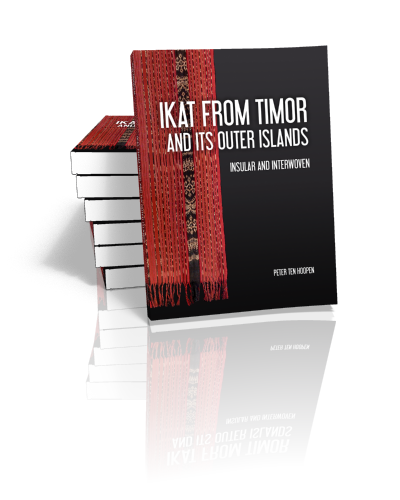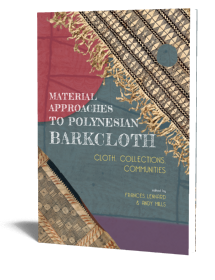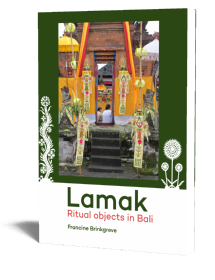Ikat from Timor and its outer Islands
Insular and Interwoven
Peter ten Hoopen | 2022

Ikat from Timor and its outer Islands
Insular and Interwoven
Peter ten Hoopen | 2022
Paperback ISBN: 9789464280128 | Hardback ISBN: 9789464280135 | Imprint: Sidestone Press Dissertations | Format: 210x280mm | 318 pp. | Language: English | 5 illus. (bw) | 350 illus. (fc) | Keywords: ikat; Indonesia; dyeing; weaving; textile; asymmetry; virtuosity, women’s warpath; Timor; Sumba; Lembata; Moluccas; Alor; Kisar, Tanimbar; Roti; Savu | download cover
Read online 265 times
Revised edition 2023 (first published 2022).
- Digital & Online access
-
Buy via Sidestone (EU & UK)
-
Buy via our Distributors (WORLD)
For non-EU or UK destinations you can buy our books via our international distributors. Although prices may vary this will ensure speedy delivery and reduction in shipping costs or import tax. But you can also order with us directly via the module above.
UK international distributor
USA international distributor
-
Bookinfo
Paperback ISBN: 9789464280128 | Hardback ISBN: 9789464280135 | Imprint: Sidestone Press Dissertations | Format: 210x280mm | 318 pp. | Language: English | 5 illus. (bw) | 350 illus. (fc) | Keywords: ikat; Indonesia; dyeing; weaving; textile; asymmetry; virtuosity, women’s warpath; Timor; Sumba; Lembata; Moluccas; Alor; Kisar, Tanimbar; Roti; Savu | download cover
Read online 265 times
Revised edition 2023 (first published 2022).

We will plant a tree for each order containing a paperback or hardback book via OneTreePlanted.org.
This is the first study to focus on ikat of the Timor region from a technical perspective, including microscopy and design analysis of asymmetry, an understudied subject. Paradoxically this technical perspective highlights the human factor. Focused on the last century of the colonial period, we see the weaver’s decisions in close-up, as if we are sitting next to her. This yields rich insights, not just in materiality, but also in the weavers’ creativity.
Asymmetry is widely distributed in the region, yet has largely been ignored. This is curious, because asymmetry is highly interesting: it goes against ikat’s technical diktat (which prescribes the production of two identical panels in parallel), hence requires extra work. Seven distinct ways to achieve asymmetry are differentiated, including visual tricks and illusions, flagrant displays of virtuosity and intellectual superiority. On Sumba, women of the nobility made thrilling and amusing efforts to hide their virtuosity, dyeing into their men’s cloths tiny visual devices, secret keys, which revealed that their work was not just good, but luar biasa, out of the ordinary. Ironically, because these late 19th- and early 20th-century dyers were such great masters at hiding their virtuosity, it remained overlooked by generations of researchers.
Taking up Marie Jeanne Adams’s 1969 call, so far unheeded, to deepen the study of Indonesian ikat textiles by means of microscopy, the author shot thousands of micro-photographs, allowing a study of yarn development over time, as well as the differentiation of 21 distinct weave types, a number far exceeding expectation, and their distribution across 41 ikat weaving regions in the Indonesian archipelago.
In the final chapter the author analyses what may have spurred the weavers of the region to create their most intricate, most time consuming, feats of artistry, and develops a view of these women as far more inventive and intelligent than they have been credited with before – and more assertive, using ikat’s prestige to spin their men into a web of taboos and prescriptions.
Awards
This volume received an 2023 ICAS Book Prize Accolade. “A work of considerable scholarship, this is a beautifully produced and superbly well-illustrated work that, while soft-covered, still demonstrates the very highest publication production values.”
Preface
1. Angles of investigation
1.1 Status quaestionis
1.2 The Austronesian ikat tradition
1.3 The field of study
1.4 Focus on older specimens
1.5 The Reference Set
2. Yarn and weave types
2.1 Fibres under the microscope
2.2 Varieties of plying
2.3 Introduction of machine-made thread
2.4 Weave varieties per region
2.5 Irregular weaves pose questions about motivation
3. Distribution of shared motifs
3.1 Emblems of identity and connection
3.2 Motives for adopting ‘foreign’ motifs
3.3 Whose pattern is it anyway?
3.4 Motifs shared across the region under study
3.4.1 Linked hexagons
3.4.2 The Pictorial Strip, Rimanu
3.4.3 The Human figure, stand-alone
3.4.4 The Double-headed eagle
3.4.5 The Triangle-with-projections
3.4.6 The Eight-pointed star
3.4.7 The ‘Breast beam’ motif
3.4.8 The Keu motif
4. Asymmetry – in defiance of ikat’s technical diktat
4.1 Techniques to achieve asymmetry
4.2 Sought complexity: asymmetry as proof of mastery
4.3 Incidental asymmetry – intentional or accidental
5. Ikat in its social context
6. Conclusion: technical research highlights female talents
Abstract
Appendix
Bibliography
Acknowledgements
Pronunciation Guide
Colophon
Index
Dr. Peter ten Hoopen
From 1968 to 1971 Dr. Peter ten Hoopen lived in and travelled through the Middle East and South Asia, conducting journalistic research and recording ethnic music in Afghanistan, now curated by the Smithsonian Institution (Washington, DC). During his extensive travels in 65 countries in subsequent years he witnessed the ongoing decline of numerous indigenous traditions. This experience affected him deeply and in 1976 led to his initiative to assemble a reference collection of particularly imperilled Indonesian ikat textiles – meticulously documented on a level not previously attempted.
Since his retirement in 2010 Peter ten Hoopen has been focussing on documenting of the above-mentioned, by then extensive reference collection of Indonesian ikat textiles. This has led to major exhibitions at the Museu do Oriente in Lisbon (2014-2015 and 2019-2020) and at the Museum and Art Gallery, the University of Hong Kong (2017-2018), for which he authored or edited the catalogues. His collecting and documenting since the mid-1970s culminated in the publication of his Ikat Textiles of the Indonesian Archipelago (2018) and the research reported in the present PhD thesis.
Abstract:
This is the first study to focus on ikat of the Timor region from a technical perspective, including microscopy and design analysis of asymmetry, an understudied subject. Paradoxically this technical perspective highlights the human factor. Focused on the last century of the colonial period, we see the weaver’s decisions in close-up, as if we are sitting next to her. This yields rich insights, not just in materiality, but also in the weavers’ creativity.
Asymmetry is widely distributed in the region, yet has largely been ignored. This is curious, because asymmetry is highly interesting: it goes against ikat’s technical diktat (which prescribes the production of two identical panels in parallel), hence requires extra work. Seven distinct ways to achieve asymmetry are differentiated, including visual tricks and illusions, flagrant displays of virtuosity and intellectual superiority. On Sumba, women of the nobility made thrilling and amusing efforts to hide their virtuosity, dyeing into their men’s cloths tiny visual devices, secret keys, which revealed that their work was not just good, but luar biasa, out of the ordinary. Ironically, because these late 19th- and early 20th-century dyers were such great masters at hiding their virtuosity, it remained overlooked by generations of researchers.
Taking up Marie Jeanne Adams’s 1969 call, so far unheeded, to deepen the study of Indonesian ikat textiles by means of microscopy, the author shot thousands of micro-photographs, allowing a study of yarn development over time, as well as the differentiation of 21 distinct weave types, a number far exceeding expectation, and their distribution across 41 ikat weaving regions in the Indonesian archipelago.
In the final chapter the author analyses what may have spurred the weavers of the region to create their most intricate, most time consuming, feats of artistry, and develops a view of these women as far more inventive and intelligent than they have been credited with before – and more assertive, using ikat’s prestige to spin their men into a web of taboos and prescriptions.
Awards
This volume received an 2023 ICAS Book Prize Accolade. “A work of considerable scholarship, this is a beautifully produced and superbly well-illustrated work that, while soft-covered, still demonstrates the very highest publication production values.”
Contents
Preface
1. Angles of investigation
1.1 Status quaestionis
1.2 The Austronesian ikat tradition
1.3 The field of study
1.4 Focus on older specimens
1.5 The Reference Set
2. Yarn and weave types
2.1 Fibres under the microscope
2.2 Varieties of plying
2.3 Introduction of machine-made thread
2.4 Weave varieties per region
2.5 Irregular weaves pose questions about motivation
3. Distribution of shared motifs
3.1 Emblems of identity and connection
3.2 Motives for adopting ‘foreign’ motifs
3.3 Whose pattern is it anyway?
3.4 Motifs shared across the region under study
3.4.1 Linked hexagons
3.4.2 The Pictorial Strip, Rimanu
3.4.3 The Human figure, stand-alone
3.4.4 The Double-headed eagle
3.4.5 The Triangle-with-projections
3.4.6 The Eight-pointed star
3.4.7 The ‘Breast beam’ motif
3.4.8 The Keu motif
4. Asymmetry – in defiance of ikat’s technical diktat
4.1 Techniques to achieve asymmetry
4.2 Sought complexity: asymmetry as proof of mastery
4.3 Incidental asymmetry – intentional or accidental
5. Ikat in its social context
6. Conclusion: technical research highlights female talents
Abstract
Appendix
Bibliography
Acknowledgements
Pronunciation Guide
Colophon
Index
Dr. Peter ten Hoopen
From 1968 to 1971 Dr. Peter ten Hoopen lived in and travelled through the Middle East and South Asia, conducting journalistic research and recording ethnic music in Afghanistan, now curated by the Smithsonian Institution (Washington, DC). During his extensive travels in 65 countries in subsequent years he witnessed the ongoing decline of numerous indigenous traditions. This experience affected him deeply and in 1976 led to his initiative to assemble a reference collection of particularly imperilled Indonesian ikat textiles – meticulously documented on a level not previously attempted.
Since his retirement in 2010 Peter ten Hoopen has been focussing on documenting of the above-mentioned, by then extensive reference collection of Indonesian ikat textiles. This has led to major exhibitions at the Museu do Oriente in Lisbon (2014-2015 and 2019-2020) and at the Museum and Art Gallery, the University of Hong Kong (2017-2018), for which he authored or edited the catalogues. His collecting and documenting since the mid-1970s culminated in the publication of his Ikat Textiles of the Indonesian Archipelago (2018) and the research reported in the present PhD thesis.
- Digital & Online access
-
Buy via Sidestone (EU & UK)
-
Buy via our Distributors (WORLD)
For non-EU or UK destinations you can buy our books via our international distributors. Although prices may vary this will ensure speedy delivery and reduction in shipping costs or import tax. But you can also order with us directly via the module above.
UK international distributor
USA international distributor
- Browse all books by subject
-
Search all books

We will plant a tree for each order containing a paperback or hardback book via OneTreePlanted.org.
You might also like:
© 2025 Sidestone Press KvK nr. 28114891 Privacy policy Sidestone Newsletter Terms and Conditions (Dutch)








